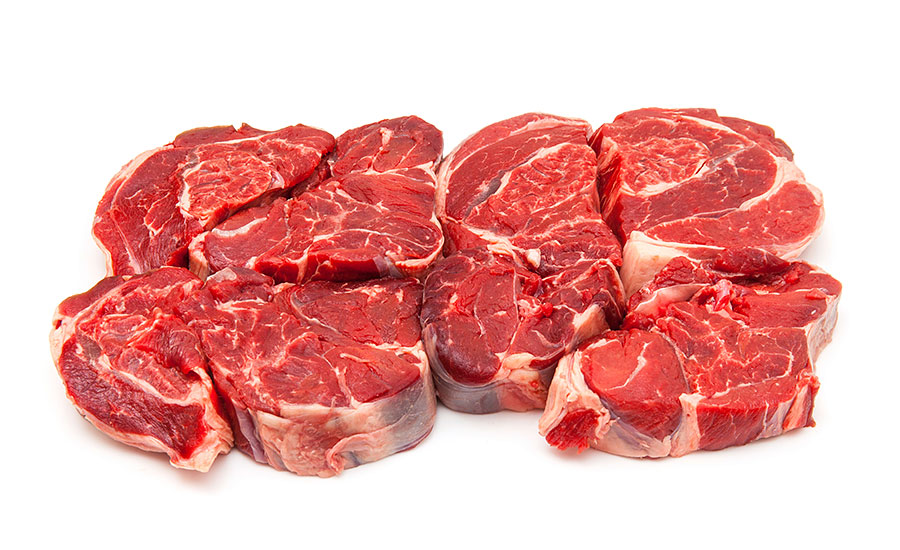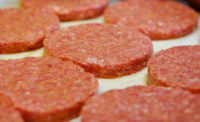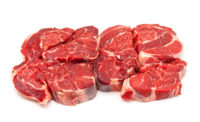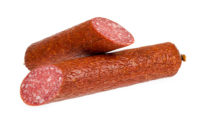Meat Science Review
Mulitple-hurdle antimicrobial interventions and ground beef quality

With the U.S. Department of Agriculture’s Food Safety and Inspection Service (FSIS) declaration of Escherichia coli O157:H7 and Shiga toxin-producing E. coli (STEC) as adulterants in non-intact raw beef products and intact raw beef products intended for non-intact use (FSIS, 2012), adding antimicrobial interventions has become standard procedure during beef harvest and further processing.
Despite best practices, however, microbial contamination of beef carcasses can be a direct result of harvesting cattle (Kang, Koohmaraie, & Siragusa, 2001). Implementing multiple applications of antimicrobial interventions can mitigate possible contamination from the slaughter process and improve the microbiological quality of beef carcasses (Bacon et al., 2000). The concept of using consecutive decontamination processes in beef packing plants to improve the microbiological quality of beef carcasses is beneficial to reduce microbiological contamination of beef carcass surfaces that can occur during the beef harvest process (Bacon et al., 2000). The application of organic acids and hot water as a means of whole-carcass spraying has evolved from ambient to warm water washes, to use of antimicrobials, hot water and steam (Koohmaraie et al., 2005). But because most carcass decontamination treatments do not sterilize the carcass, microorganisms remaining on carcass surfaces can easily be transferred onto freshly cut surfaces during carcass fabrication, and subsequently carried through grinding operations (Pohlman, Stivarius, McElyea, Johnson, & Johnson, 2002).
In the past, ground beef processors have expressed concern related to the effect of antimicrobial interventions on quality of beef raw materials, especially characteristics such as discoloration, off odors and off flavors. The impact of these treatments must be addressed, because consumers often associate meat quality with color and base their buying decisions on such attributes (Mancini & Hunt, 2005). A study was conducted to evaluate possible quality defects caused by multiple applications of antimicrobial interventions (hot water, lactic acid, acidified sodium chlorite, Beefxide) applied at various steps along the ground beef production chain.
Combinations of antimicrobial treatments — hot water (82 degrees C or higher), lactic acid (4-5 percent), acidified sodium chlorite (pH of 2.7-2.8) and Beefxide (lactic/citric acid mixture; up to 2.5 percent) — were applied to hot or chilled carcasses and trimmings before manufacturing ground beef patties, which were designated for color evaluation, consumer panel or trained panel evaluation (Table 1).

While some visual darkening and loss of redness of patty color occurred by the completion of the shelf-life period, overall few significant changes were seen in color for each treatment combination. Consumer scores were affected by combined antimicrobial treatment effects for overall liking (P = 0.0190), flavor liking (P = 0.0246), and beefy flavor liking (P = 0.0313). Trained panelists detected 18 out of 33 attributes with only scores for fat-like (P = 0.0391) and cardboardy (P < 0.0001) being affected by treatments.
No clear trends were related to any single or combined antimicrobial treatment, and findings support that these food safety interventions have minimal negative effects on beef patty quality. In general, findings from this study show that food safety interventions, while effective in reducing microbiological counts on product surfaces, have minimal negative effects on beef patty quality. NP
Looking for a reprint of this article?
From high-res PDFs to custom plaques, order your copy today!





